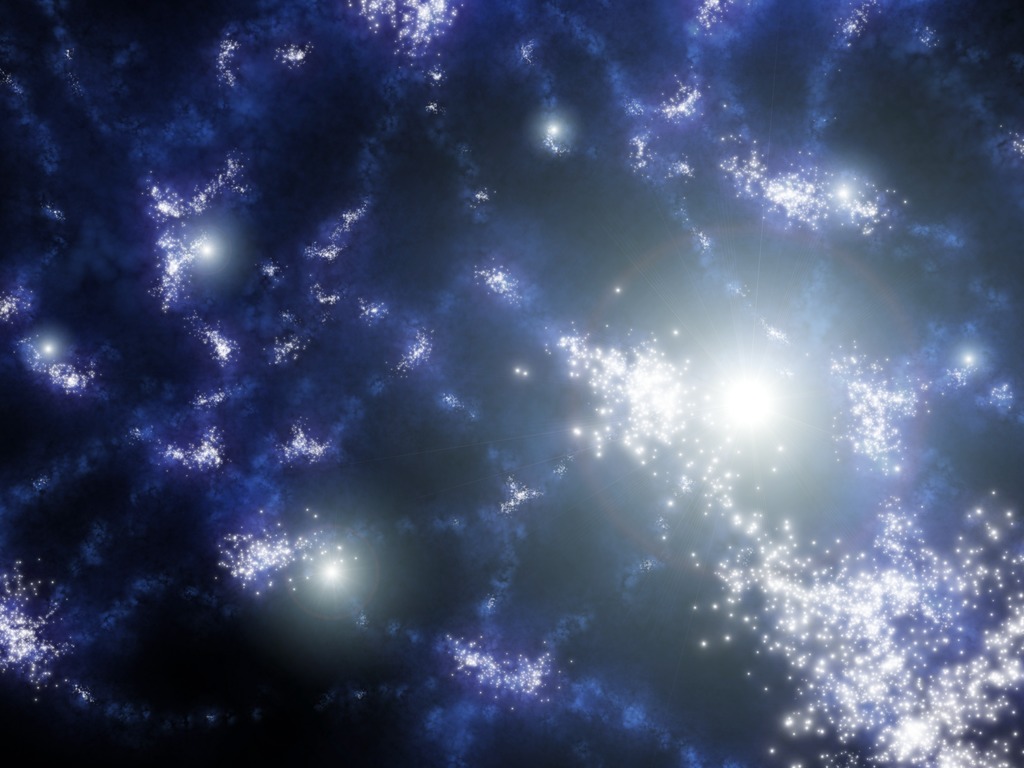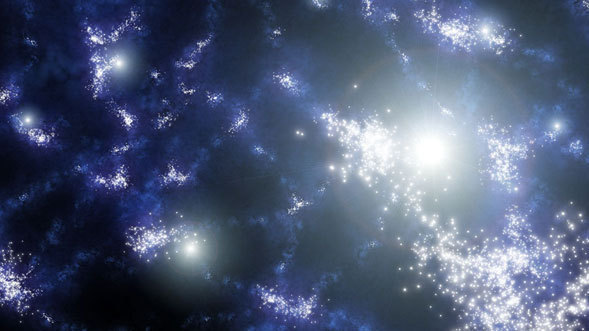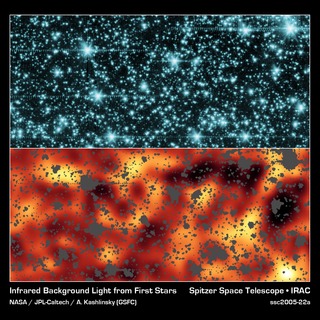
Credit: NASA/JPL-Caltech/R. Hurt (SSC)
Artwork • November 2nd, 2005 • ssc2005-22b
ssc2005-22b
This artist's concept shows what the very early universe might have looked like, just after its first stars began bursting onto the scene.
Scientists theorize that the universe arose around 13.7 billion years ago in an explosion known as the Big Bang. Almost instantaneously afterward, matter began clumping together due to quantum fluctuations. Gravity kicked in next, causing those clumps to grow into larger clouds of invisible hydrogen gas (colored blue here). Eventually, around 200 to 400 million years after the Big Bang, the gas ignited and stars were born. The illustration shows collections of these first stars, called Population III stars, clustered together into what will later become galaxies.
Population III stars are thought to have been incredibly massive, more than 100 times the mass of our Sun. They lived quickly and died brilliantly in fiery blasts called supernovas. Some of those supernovas are shown here as bright balls of white light.
NASA's Spitzer Space Telescope might have detected the infrared glow of these exceptional stars. Though the stars originally shone with ultraviolet and other types of light, that light stretched out to longer, infrared wavelengths over the course of its lengthy journey to Spitzer's eyes. Because the stars are highly clustered, their light stands out like faint mountains in the distant universe.
About the Object
- Name
- Type
- Star > Population > III






